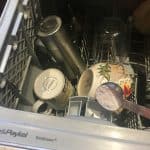Green Spring Cleaning & DIY Dishwasher Soap!
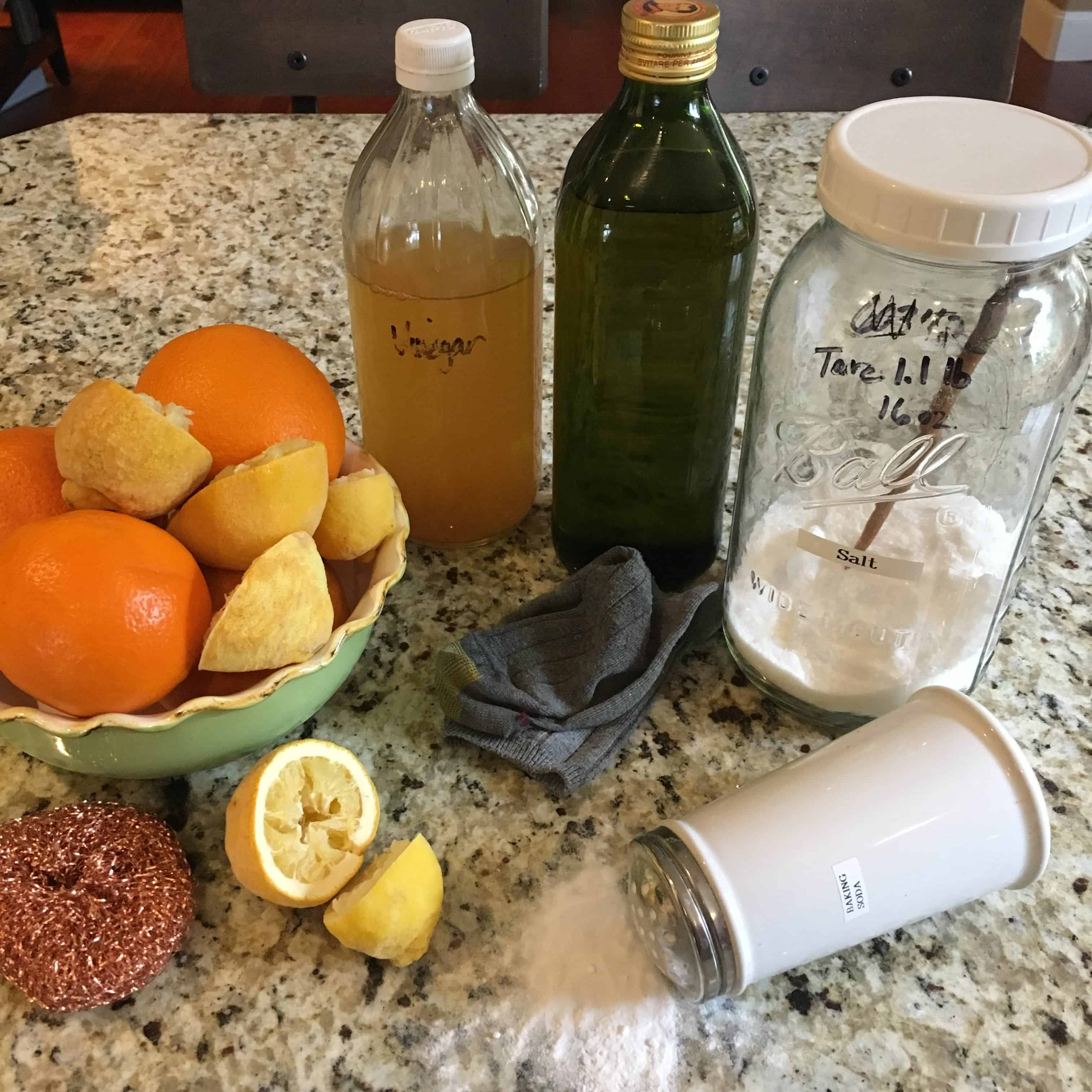
It’s springtime and for many of us, it’s time to clean out that winter funk, sweep up the dust bunnies, and wash the windows to let the sunshine in. While we buy commercial cleaning agents to clean our homes, many household cleaners can actually make us and the environment sick, contributing to the body burden of chemicals, disrupting our endocrine system, and contributing to indoor air and outdoor pollution. But we can avoid this by making our own cleaners with simple non-toxic ingredients we can pick up at the grocery store, saving money as well as our health and environment. And check out the recipe at the end for making your own Dishwasher Soap!
Why Green Cleaning?
Health

In the United States, chemicals are largely unregulated. This surprised me, coming from a firefighting/hazardous materials/paramedic background! In 1976, the Toxic Substances Control Act (TSCA) was enacted to require reporting and testing of chemical substances, which sounds like a great thing, but it excluded chemicals in food, drugs, cosmetics, pesticides, and more, and grandfathered in over 62,000 chemicals already in use as “safe”. By US law, chemical regulations cannot impede or create unnecessary economic barriers to technological innovation, thus creating a loophole allowing companies not to disclose chemicals in their products that are considered “trade-secret,” “parfum/fragrance,” or “proprietary information.” So we really don’t know what’s in a lot of the products we use. Of the 80,000 chemicals in use in the US today, only about 200 submitted safety testing reports to the Environmental Protection Agency (EPA). No new chemicals have been banned since 1984 and only nine chemicals are regulated by the EPA:
- Lead
- PCBs
- Hexavalent Chromium
- Asbestos
- Dioxin
- Nitrates with 4 Specific Acids
- Fully Halogenated Chlorofluoroalkanes
Chemical regulation in the US differs from that in the EU in that US law considers chemicals safe until proven dangerous while the EU considers them dangerous until proven safe. This is an important distinction.
Commercial cleaning products may and often contain:
- Allergens
- Phthalates
- Endocrine Disruptors
- Known Carcinogens
- Any undisclosed chemical, including arsenic, formaldehyde, etc.
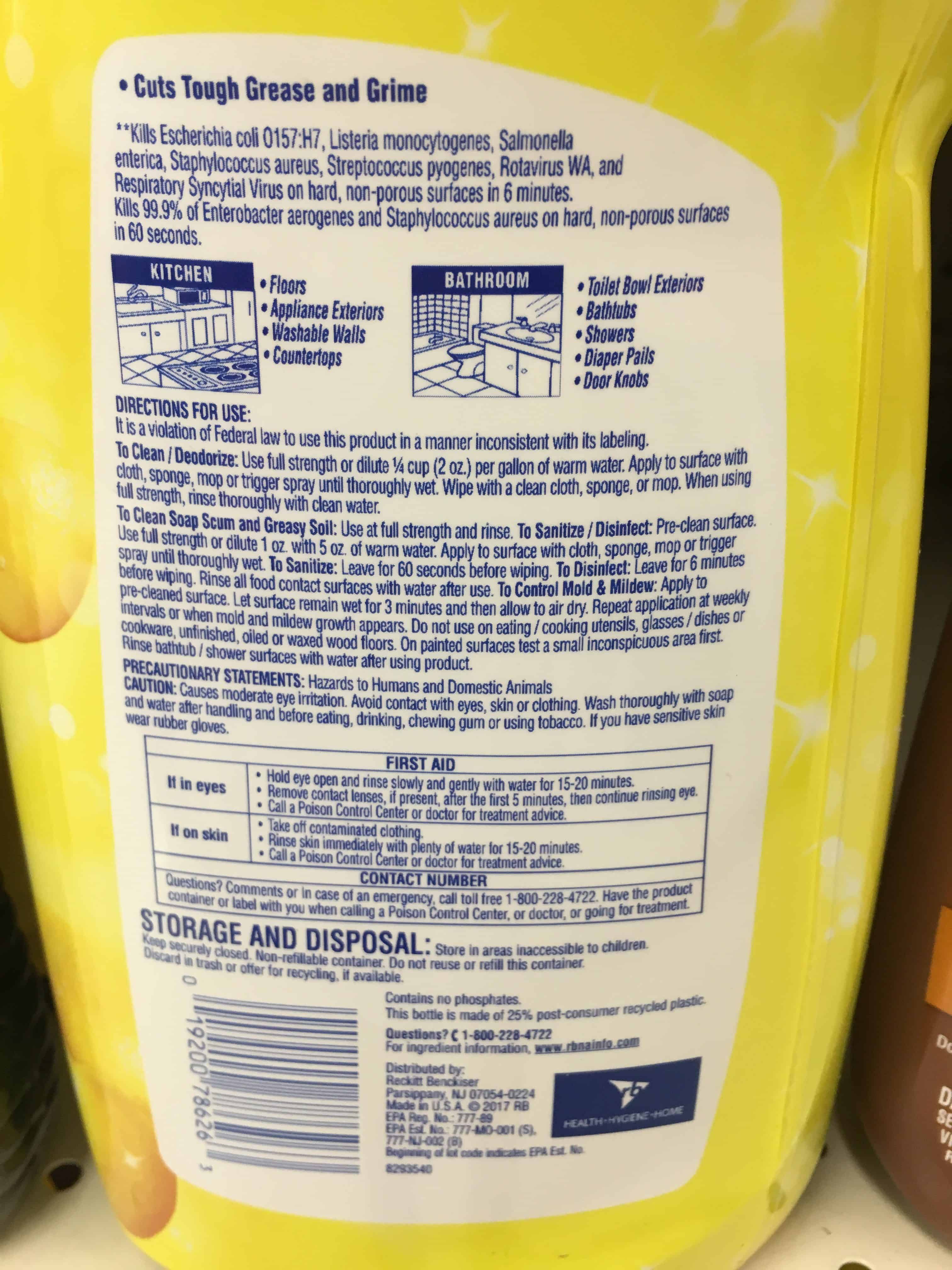
What’s in this cleaner? Manufacturers are not required to disclose chemical content if they consider it “trade secret,” “proprietary information,” or “fragrance/parfum”.
And it can all be cloaked under trade-secret, parfum/fragrance, or proprietary information. Check out the labels on some of your commercial cleaning products…do you see an ingredients list? If there is one, which is rare, does it list parfum or fragrance? Then you don’t really know what’s in there. You can call the company and ask for an ingredients list, but they probably will not provide you with one—it’s not required, even in cases of severe allergies. Parfum, which sounds exotic and special, is a cloaking mechanism, not fancy perfume.
In 2016, President Obama signed into effect the Frank R. Lautenberg Chemical Safety for the 21st Century Act, meant to overhaul TSCA under the next administration. The Lautenberg Act intended to mandate and set deadlines for safety reviews of existing and new chemicals, make health the standard when reviewing chemicals rather than business interest, better protect vulnerable populations, and limit confidential information on chemicals. However, loopholes still exist in this new chemical act, and combined with changes in the EPA under the Trump administration, not much has changed from TSCA.
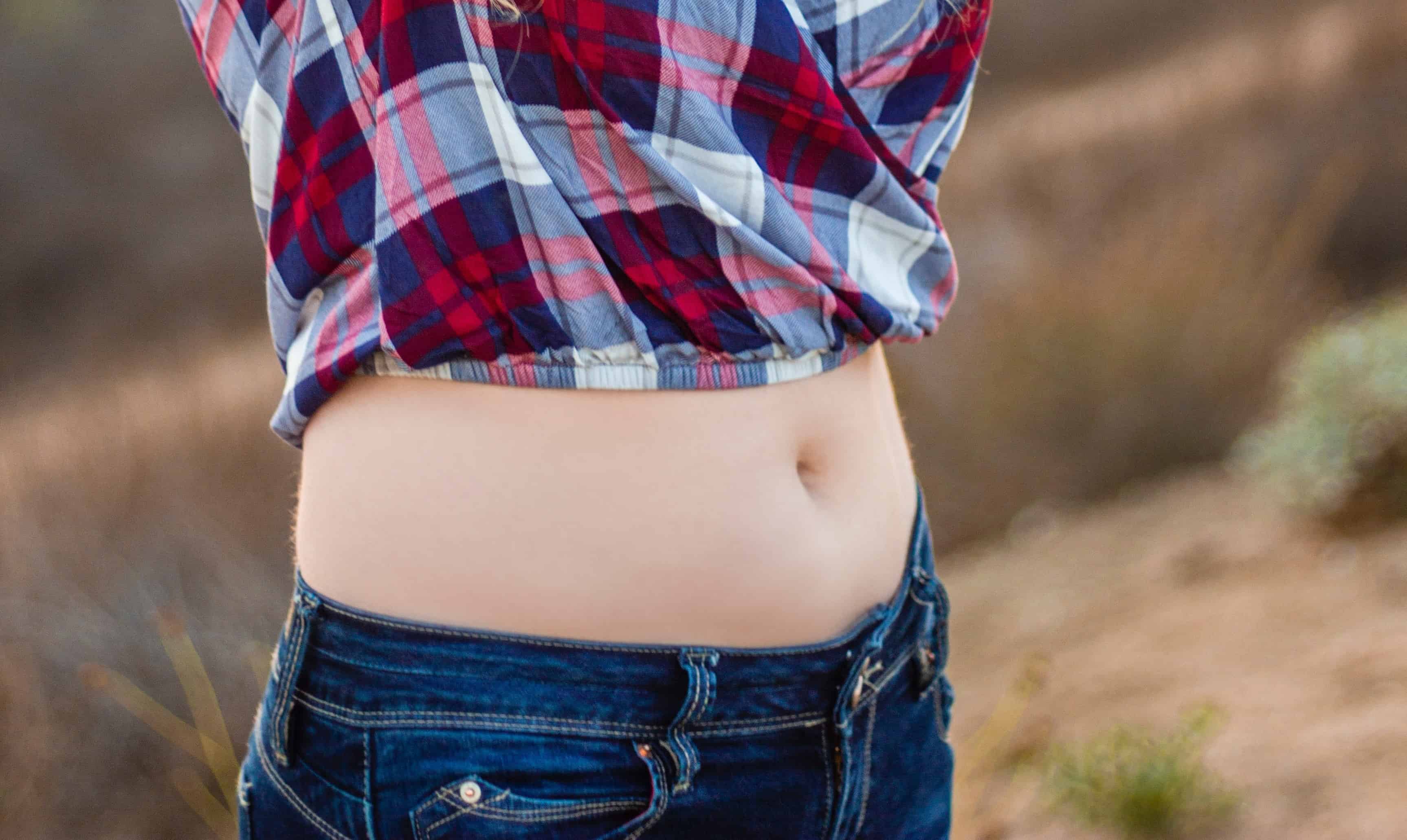
Our microbiome is also at risk with commercial cleaning products. Beneficial bacteria, fungi, protozoa, and viruses live on and inside our bodies that function in digestion, our immune system, and vitamin production. We have up to 10 trillion microbes in our microbiome, 10 times the number of our own human cells, accounting for the majority of our genetic material! Antibacterial cleaners do not discriminate between beneficial and harmful microbes, so when you clean with them, you kill off bacteria and viruses that help keep you healthy, actually putting yourself at risk for more disease, and promoting the production of harmful antibiotic-resistant microbes. Antibacterial substances such as Triclosan, bleach, etc., can actually clean you and your family sick and are best avoided.
Environment
Chemicals in cleaning products can pollute our environment in several ways. According to the EPA, indoor air is 2-5 times more polluted than outdoor air; how we clean our homes can play a huge role in this. In the fire service we had a hazardous materials rule of thumb, “if you can smell it, you’re already exposed,” (note, this does NOT mean that if you don’t smell it you’re not exposed—just that definitely smelling a chemical means definite exposure) so if you can smell the lingering odors of your cleaning products in your home or in your clothes, you are inhaling the chemicals in them. And remember, fragrance chemicals do not have to be disclosed! We’ve become accustomed to equating fragrance with clean, but it’s not, it’s often a pollutant and could be dangerous. Clean shouldn’t smell, it should just be clean.
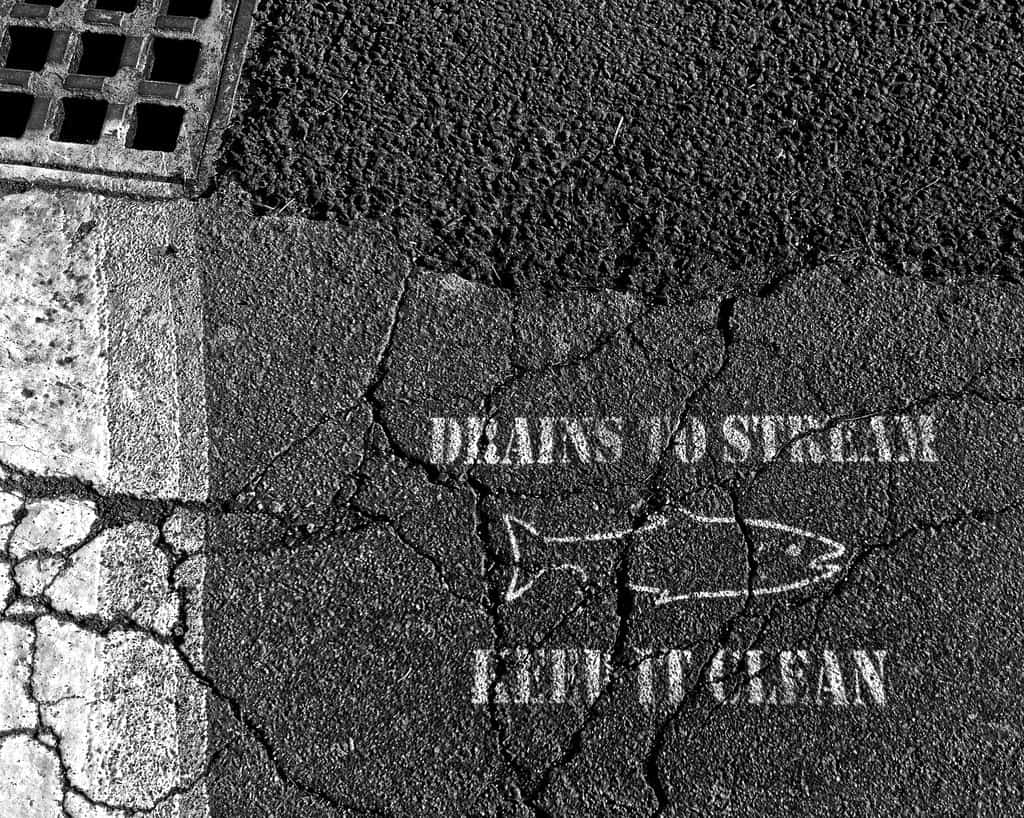
Chemicals that go down our drains enter ground water, streams, lakes, and oceans. Sewer treatment plants cannot remove many chemicals, fragrances, and medications from wastewater and septic systems leech, untreated, directly into ground water. These chemicals wind up in our drinking water, food, and wildlife.
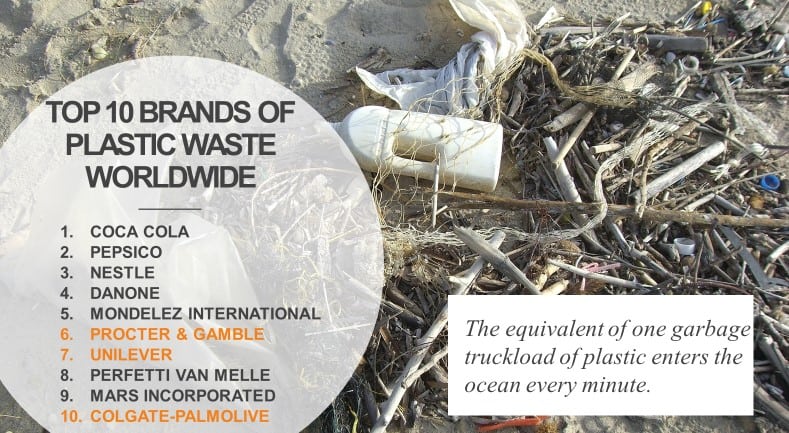
Highlighted brands indicate manufacturers of commercial cleaning products.
Finally, there is the packaging cleaning supplies come in. Most commercial cleaning supplies come in plastic packaging, which can be toxic to us and the environment. Plastics can leech chemicals into the product they hold and the environment, including phthalates, endocrine disrupting chemicals, carcinogens, and more, especially if in contact with liquids. Even if you had a commercial cleaning product without harmful chemicals, the packaging it is stored in can readily add toxins to it, which you then spray or spread throughout your home. Furthermore, most plastic is not recycled, despite putting it in the recycling bin. Only 9% of all plastic produced has ever been recycled, and the products made from recycled plastic can never be recycled again. The equivalent of one garbage truckload of plastic winds up in the ocean every minute, blowing out of landfills, garbage heaps, and flowing down streams and rivers into the sea.
Green Cleaning Agents
Vinegar, baking soda, salt, citrus/citric acid, castile soap, and elbow grease are the main cleaners we use in our home. Yep, things you can pick up at the grocery store!
Vinegar
You can use distilled white vinegar or, like we do in our house, use your homemade apple cider vinegar. We use straight vinegar as the rinse aid in our dishwasher, in window wash solution, and infuse vinegar with citrus peels to make a citrus cleaner.
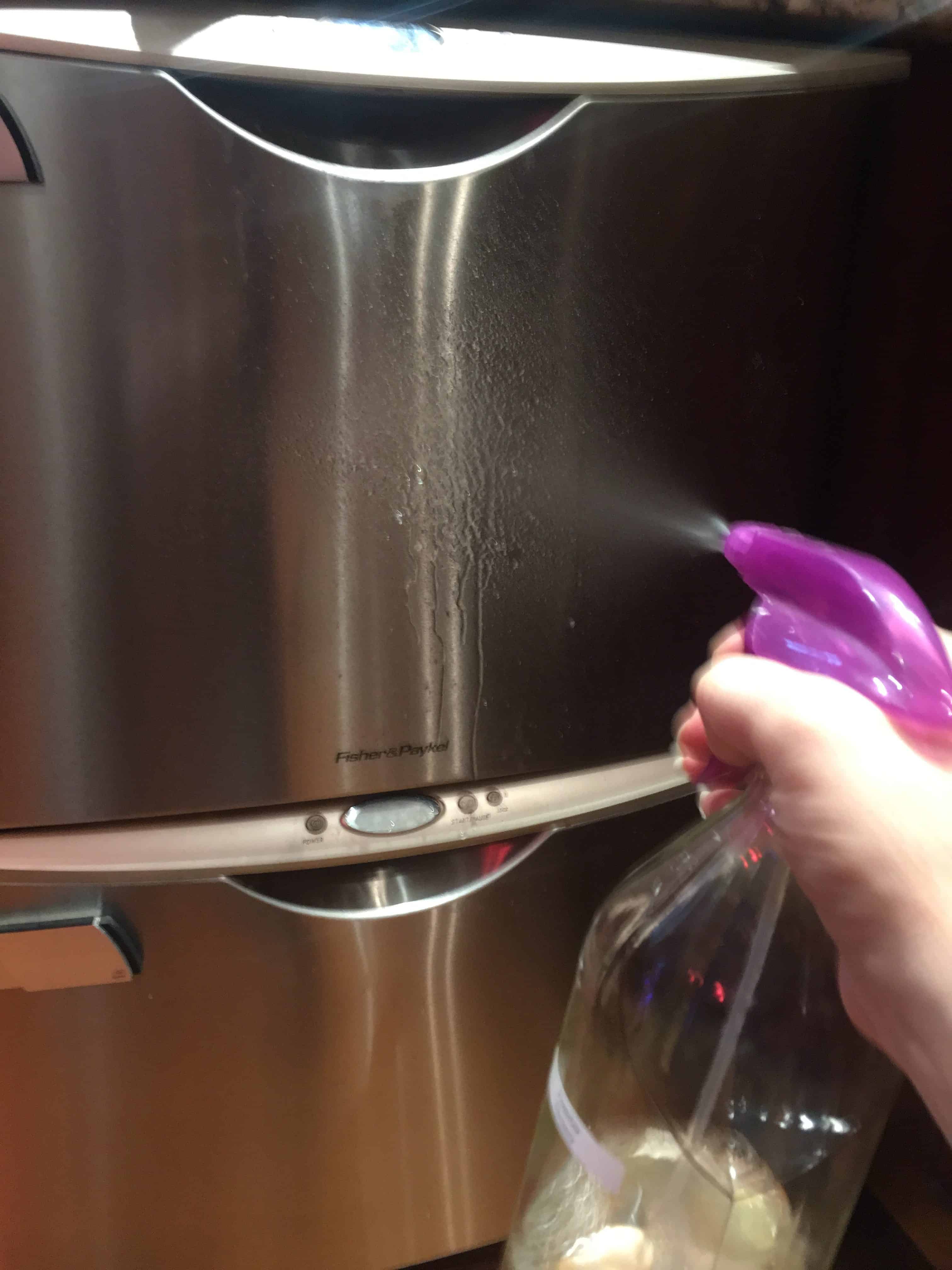
Using a homemade vinegar-based cleaning solution to clean our dishwasher.
By the way, did you know that sprayer tops fit perfectly on the top of pint-sized glass vinegar bottles? It’s true! You can use sprayer tops you already have or purchase new ones, like these from Amazon. So don’t go out and buy new bottles to put your cleaning sprays into, buy a few pints of vinegar, use the vinegar to make your cleaning agents, screw on a sprayer top, and voilá!
Note, there is information out there that some commercially-made distilled white vinegars may be derived from petroleum products, using ethyl alcohol derived from natural gas or other petroleum products—this was brought to people’s attention by the Heinz company, supposedly in response to increasing competition from generic vinegars. The Washington Post investigated this in 2009 and found that indeed, the FDA acknowledges that petroleum-based alcohols can be used to start white vinegars, but is not aware of any manufacturers who do this, because they are not required to report it. This is only the case with white vinegar, not other vinegars, such as apple cider, rice wine, etc., which are started from their stated base (apples, rice, etc.). We use apple cider vinegar for our cleaning because it is an inexpensive, simple and zero-waste process to make at home, and we know the source of our vinegar. You can learn how to make apple cider vinegar, too, from our previous post.
Baking Soda

Baking soda and a scrub brush is a simple, non-toxic, septic-safe, and effective toilet bowl cleaner!
Baking soda is a great all-purpose cleanser. We keep baking soda in shaker jars we picked up at the thrift store (you know, the ones for parmesan cheese and red pepper flakes you see at pizza joints?) and keep them by our sinks and toilets. Or you can pick up metal shaker tops to go atop regular mouth canning jars, which are really nifty! A shake of baking soda is all you need to scour out your sink, bathtub, or toilet! For extra power, give a squirt or two of vinegar to get things fizzing. To clean your oven, make a paste of baking soda and water, smear it all over the inside of your oven, avoiding the heating element, let sit overnight, and then wipe out with a damp rag; spray with vinegar water to get all the residue out. Sprinkle on your rugs or carpets, let sit, and then vacuum to remove odors and generally refresh them.
You can turn baking soda into washing soda simply by baking the baking soda in the oven. What?!? Yes, it’s true. Baking soda is sodium bicarbonate and by baking sodium bicarbonate, you produce sodium carbonate, washing soda, as the heat causes the baking soda to release carbon dioxide and water. Simply pour baking soda into a shallow baking dish, about an ½-inch thick, and bake at 400˚F for an hour, stirring once at 30 minutes. The baking soda will change from sparkly and fluffy to dull and dense washing soda. Let cool before putting in glass jars for storage (hot washing soda will crack mason jars, in my experience!).
You can find a recipe using washing soda for making dishwasher soap at the end of this post!
Salt
Salt is a great scouring agent. Add it to a dish with a sprinkling of baking soda to get off baked/burned on food from baking dishes. It goes in my dishwasher soap too.
Citrus/Citric Acid
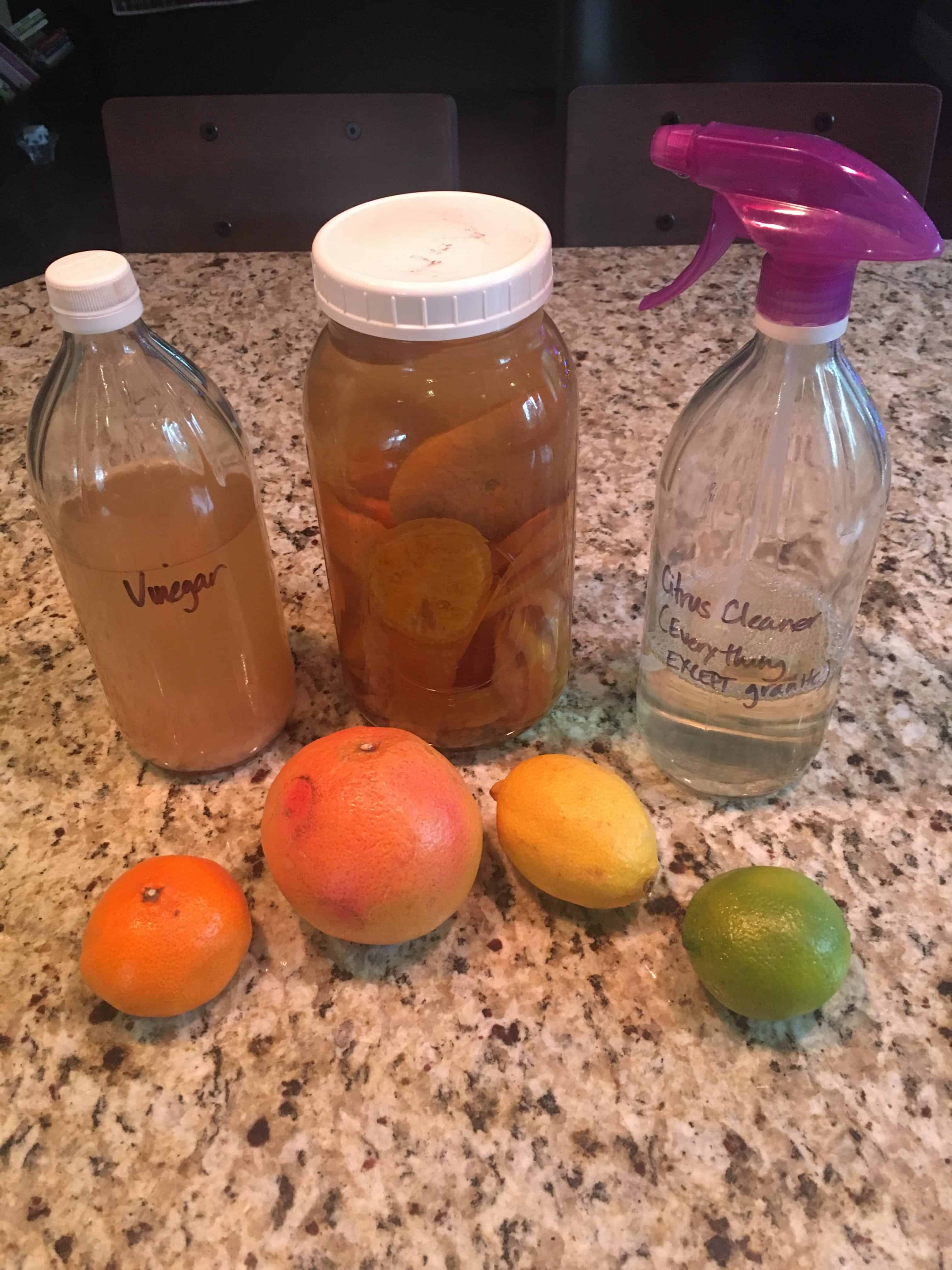 As mentioned above, add citrus peels, any kind you like (we like grapefruit), to vinegar and let it infuse for several weeks to make an excellent cleaner. Once infused, simply strain and dilute 1:1 with water in a spray bottle. Note, this cleaner is NOT recommended for use on stone surfaces, but it’s great on stainless steel, Formica, sinks, toilets, tubs, ovens, glass, etc.
As mentioned above, add citrus peels, any kind you like (we like grapefruit), to vinegar and let it infuse for several weeks to make an excellent cleaner. Once infused, simply strain and dilute 1:1 with water in a spray bottle. Note, this cleaner is NOT recommended for use on stone surfaces, but it’s great on stainless steel, Formica, sinks, toilets, tubs, ovens, glass, etc.
Citrus peels are also great for cleaning garbage disposals, if you have one. Plop the peels, some ice, and some salt into your disposal and run it until everything grinds up and disappears.
We use citric acid in dry preparations with baking soda that become activated by water, such as dishwasher soap.
Castile Soap
 Castile soap is a great, gentle, all-purpose soap you can use for cleaning your house, body, and hair! We use castile soap for hand washing dishes. Check out my process for making Castile soap and a link to recipes from Dr. Broner.
Castile soap is a great, gentle, all-purpose soap you can use for cleaning your house, body, and hair! We use castile soap for hand washing dishes. Check out my process for making Castile soap and a link to recipes from Dr. Broner.
Cost Savings
 You’ll be amazed at what a difference making your own cleaners will have own your grocery bill! I knew cleaning supplies were expensive, but it wasn’t until I broke it down that I saw just how much money I was saving making my own cleaners!
You’ll be amazed at what a difference making your own cleaners will have own your grocery bill! I knew cleaning supplies were expensive, but it wasn’t until I broke it down that I saw just how much money I was saving making my own cleaners!
The average family spends $50 a month on commercial cleaners, that’s $600 a year! Just think, how else you could use that money?
Commercial Dish Soap
$4.99 / 28 oz
18¢ / oz
DIY Dish Soap Using Castile Soap
$12.59 / 32 oz
4¢ / oz
(We dilute THAT 90% to use So actual cost is 0.004¢ / oz!)
Commercial Rinse Aid
$7.99 / 16 oz
50¢ / oz
DIY Rinse Aid Using Vinegar
$2.49 / 32 oz
8¢ / oz
Pretty awesome, huh? And its safer and zero waste too!
What Do You Do with Your Existing Cleaners?
You basically have three options for your existing cleaners:
- Use it up
- Give away
- Take it to your Household Hazardous Waste Disposal
Do NOT pour it down the drain or toss it in your trash! Most areas have household hazardous waste disposal available. Check with your city, county, or garbage service provider to find out what programs are available to you.
So, that’s a bit on what we do and why. It certainly has cut down on the cost and garbage associated with buying commercially-made cleaning products, and we feel it is much healthier, too, for us and the environment. To get you started, here is the recipe we use for our dishwasher soap. It works great! Don’t forget to fill your rinse aid compartment with vinegar too!
DIY Dishwasher Soap
Ingredients
- 1 1/2 cups Citric Acid
- 1 1/2 cups Washing Soda
- 1/2 cup Baking Soda
- 1/2 cup Salt
Instructions
- Mix all ingredients and store in an airtight container.Use amount as directed by your dishwasher manufacturer directions.
Notes:
- If you have a problem with the mixture clumping, simply add a desiccant package to your container.
Do you like this post? Please share....
[mashshare]
If you liked this post, you might like one of these:
Categories:
Tags:
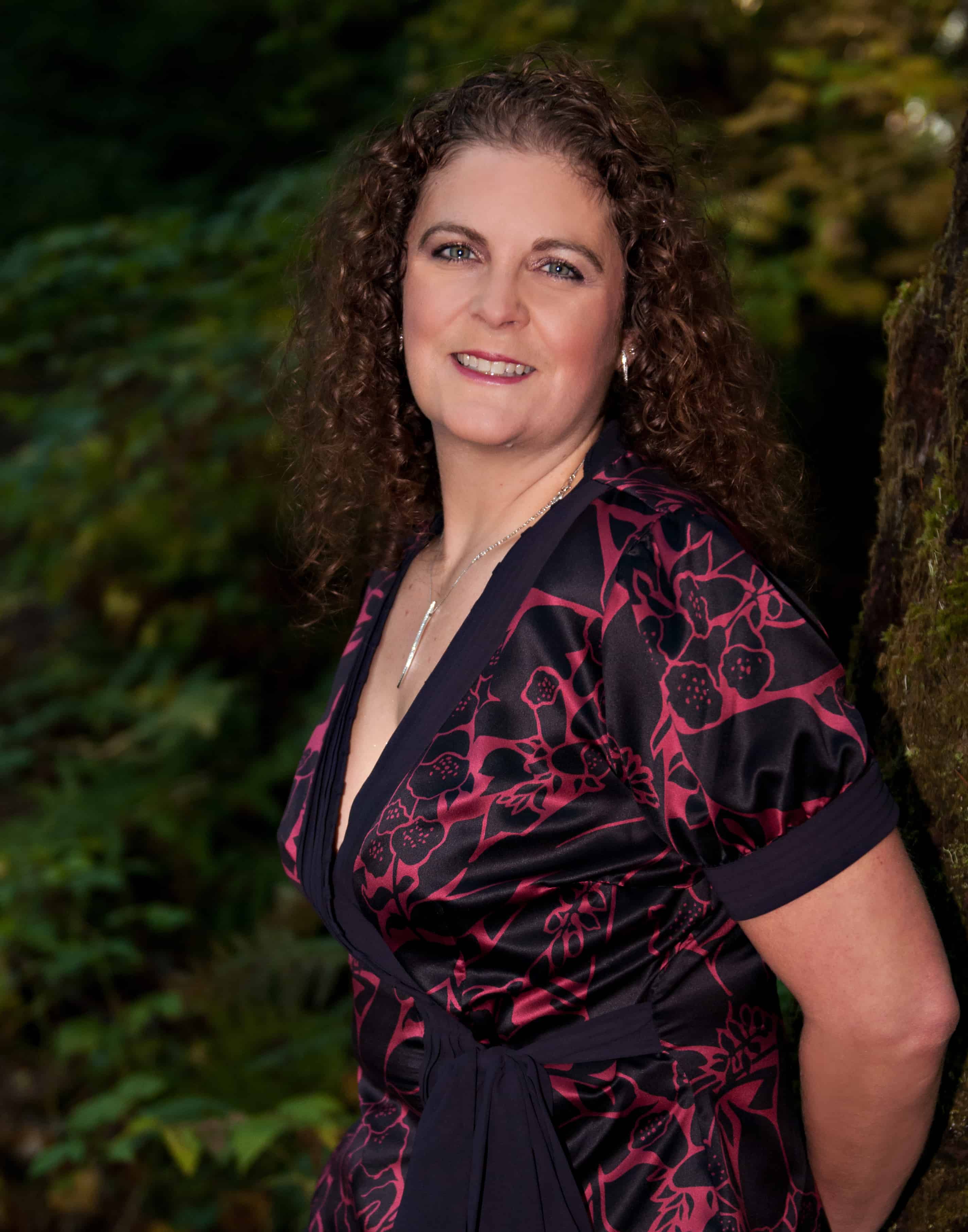
[Trī-māz-ing]
Cindy wants you to be Trimazing—three times better than amazing! After improving her health and fitness through plant-based nutrition, losing 60 pounds and becoming an adult-onset athlete, she retired from her 20-year firefighting career to help people just like you. She works with people and organizations so they can reach their health and wellness goals.
Cindy Thompson is a national board-certified Health and Wellness Coach, Lifestyle Medicine Coach, Master Vegan Lifestyle Coach and Educator, Fitness Nutrition Specialist, Behavior Change Specialist, and Fit2Thrive Firefighter Peer Fitness Trainer. She is a Food for Life Instructor with the Physicians Committee for Responsible Medicine, Rouxbe Plant-Based Professional, and Harvard Medical School Culinary Coach, teaching people how to prepare delicious, satisfying, and health-promoting meals.
She provides health and lifestyle coaching at Trimazing! Health & Lifestyle Coaching. Cindy can be reached at info@trimazing.com.
Subscribe to the Trimazing Blog
Receive occasional blog posts in your email inbox.
Subscribe to the Trimazing Blog
Receive occasional blog posts in your email inbox.

